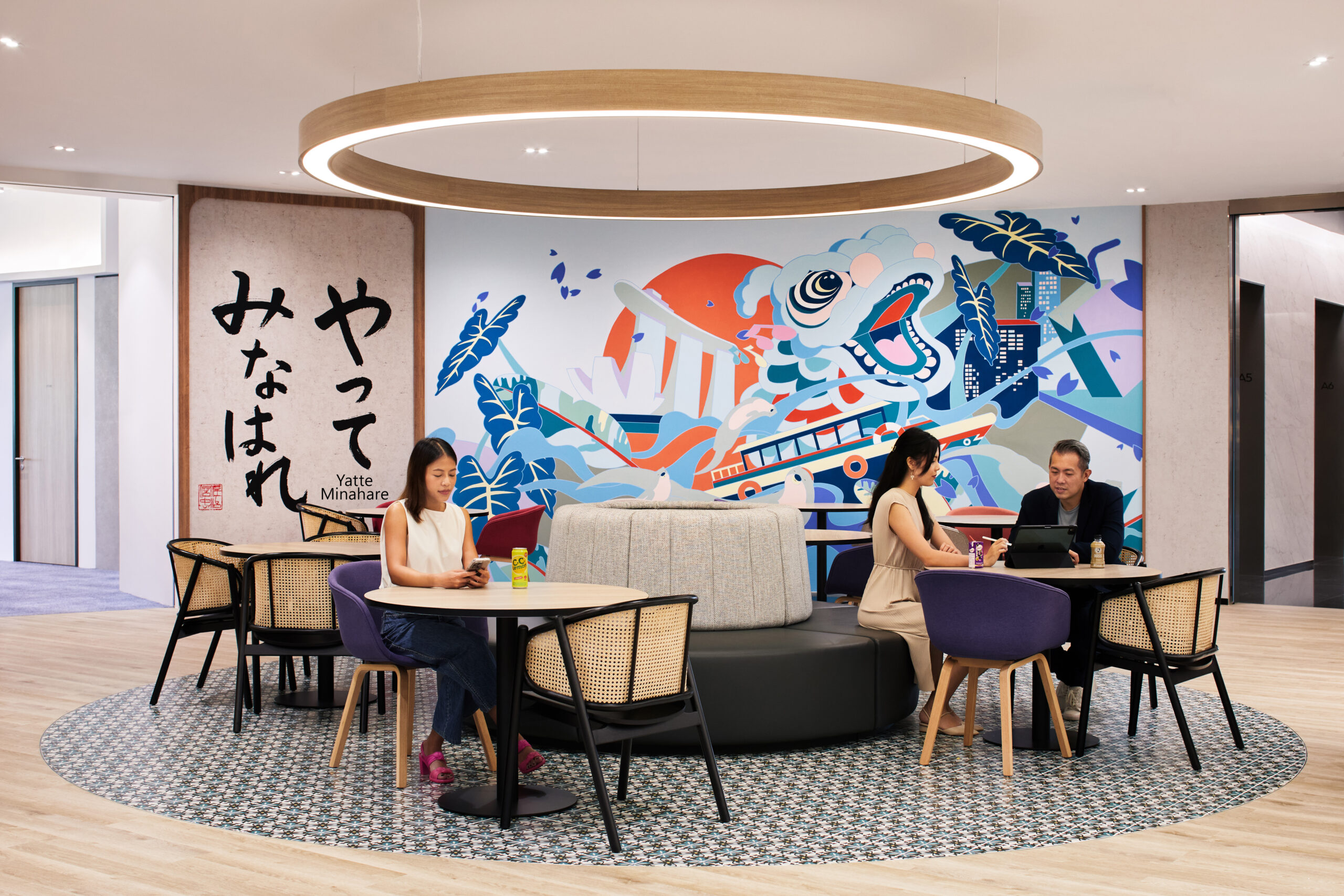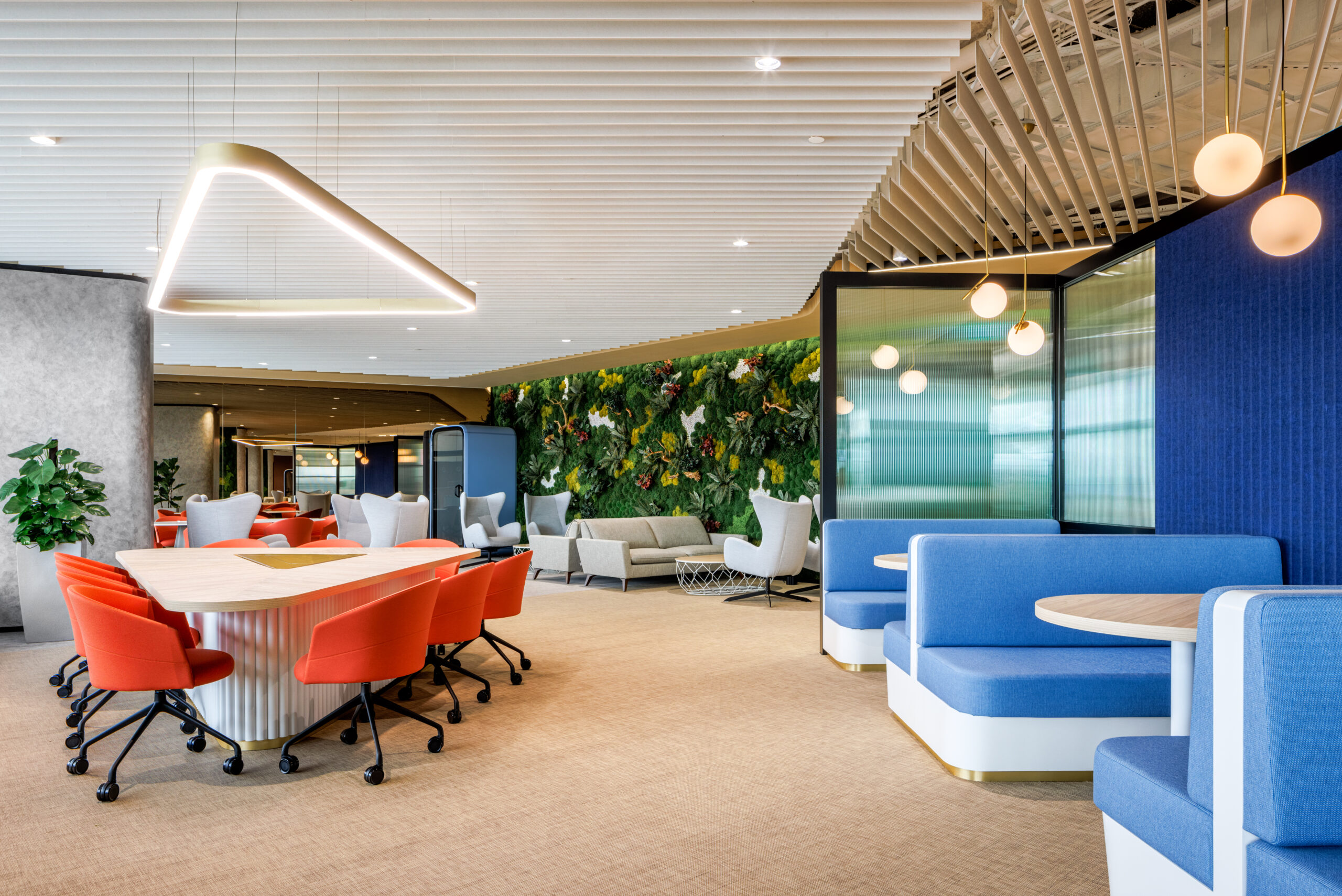Fresh, comfortable air creates an instant sense of calm and well-being; stale or stuffy air, on the other hand, can undo months of design effort the moment employees step inside.
In workplace design and build, Indoor Air Quality (IAQ) is one of the most overlooked yet critical factors in ensuring occupant comfort, health, and productivity. While aesthetics and function often take center stage, the air we breathe is just as important to how a workplace performs. At DB&B, we see IAQ as part of the invisible design – shaping experiences that people may not see, but always feel.
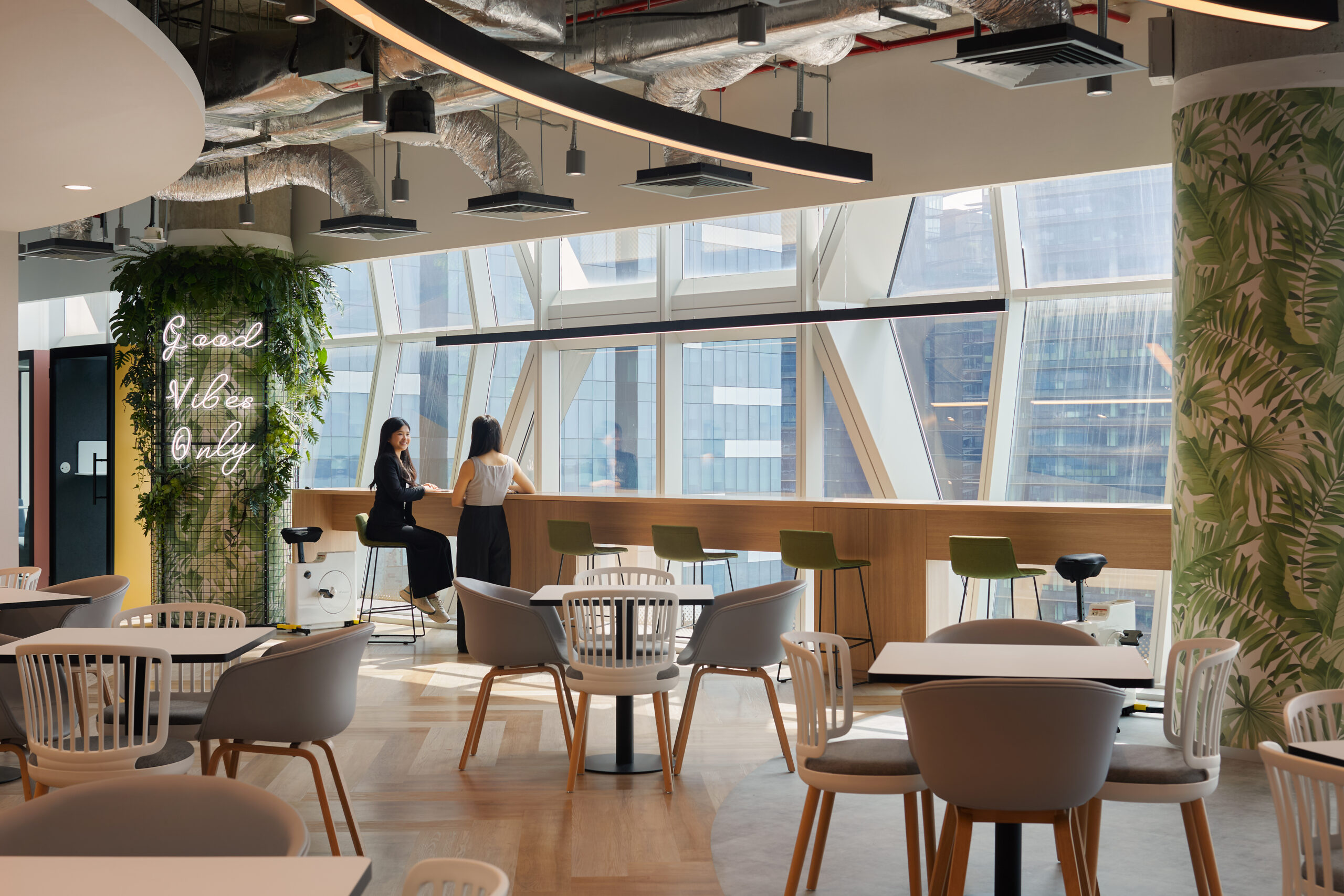
Understanding Indoor Air Quality
Indoor Air Quality refers to the condition of the air inside a building, measured by factors such as temperature, humidity, ventilation, and pollutants. These pollutants can include carbon dioxide (CO₂) from human respiration, volatile organic compounds (VOCs) from paints and finishes, and particulate matter (PM2.5 or PM10) from construction dust or outdoor air infiltration.
In new offices, poor IAQ is often caused by the very materials and systems that make the space look fresh – newly painted walls, recently installed carpets, or adhesive-heavy joinery work. These materials can release emissions for days or even weeks. Without proper ventilation and testing, occupants may experience headaches, fatigue, or discomfort soon after move-in.
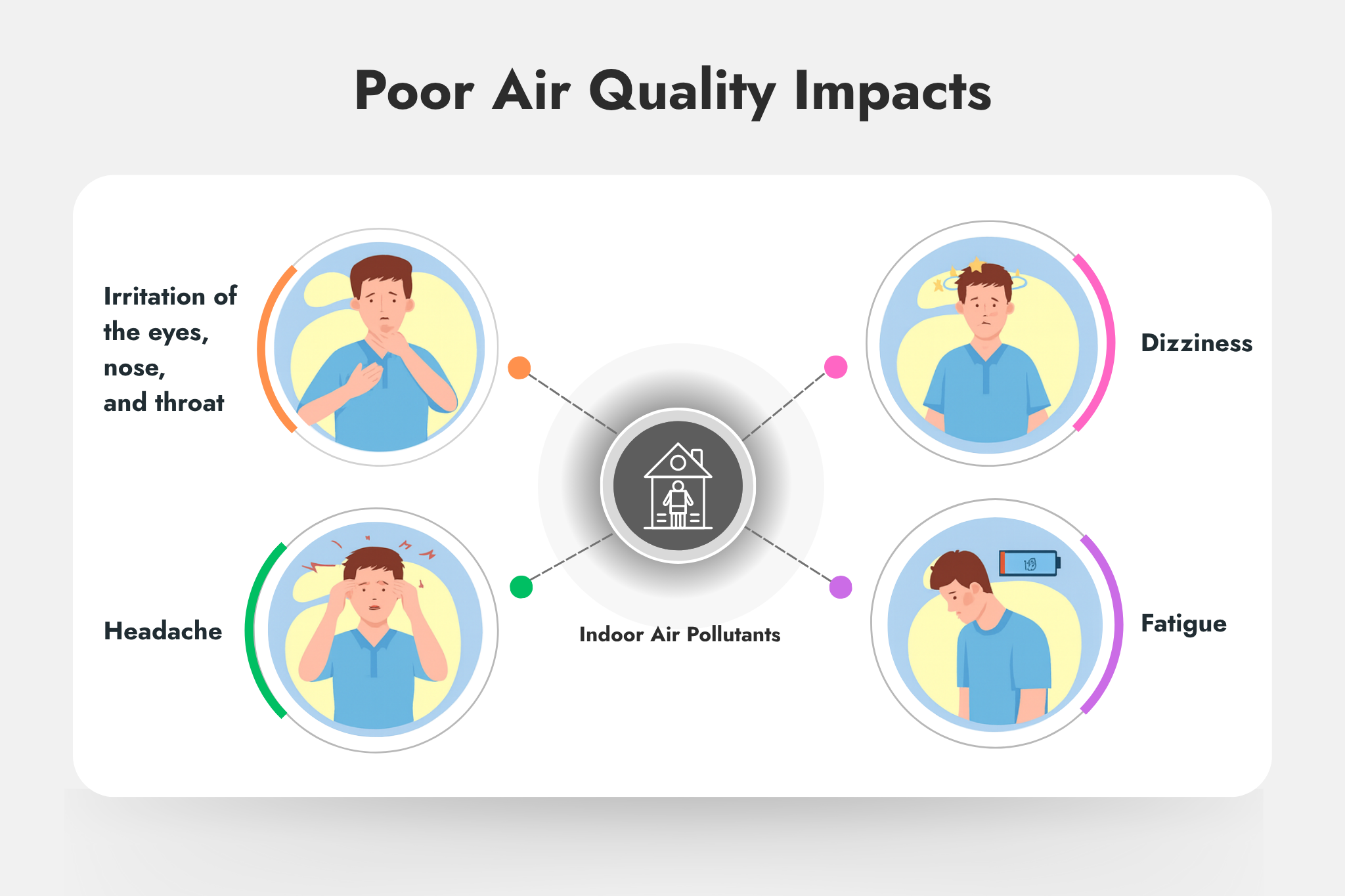
The good news? With thoughtful planning and proactive IAQ management, this can be prevented long before occupation.
Why IAQ Matters Before Occupation
Most clients think about air quality only after people start complaining. By then, it’s often too late – adjustments require downtime, rebalancing HVAC systems, or even costly rework. Managing IAQ before handover ensures comfort, compliance, and confidence right from day one.
- Health and Well-being: Poor air quality can lead to reduced concentration, respiratory irritation, or “sick building syndrome.” Pre-occupation testing ensures these risks are addressed before employees move in.
- First Impressions: The move-in experience sets the tone for culture and morale. Clean air makes the office feel new and inviting – not chemically sharp or humid.
- Certification and Compliance: Standards such as WELL, Green Mark, and LEED require proof of IAQ performance. Testing and documentation during handover make certification smoother.
- Cost Efficiency: Identifying IAQ issues before handover prevents expensive rectification works or post-occupancy complaints later.
In short, comfort begins before occupation.
How to Ensure IAQ Comfort Before Move-In
Delivering good IAQ is a coordinated effort between design, construction, and facility teams. Here’s how DB&B approaches it throughout the project lifecycle.
1. During Construction
It begins with material selection. Specifying low-VOC paints, sealants, and composite wood significantly reduces pollutants. On-site, we ensure materials are stored properly to prevent moisture or mold growth. Running ventilation systems during finishing works, where feasible, helps clear airborne contaminants early.
2. Pre-Occupation Testing and Purging
Before handover or after odour-producing works, the space undergoes an air purging period where the HVAC system runs at high ventilation rates for a period of time to purge residual emissions. Specialist consultants can then conduct IAQ tests for parameters such as CO₂, VOCs, formaldehyde, particulate matter, ozone, and carbon monoxide. Results are compared against standards (e.g., WELL v2 or NEA guidelines) to confirm compliance.
In one of our recent projects, certain on-site works involved materials that produced strong odours. The challenge was amplified by the site’s location — within a mixed-use development that included a hotel. To protect neighbouring occupants and maintain indoor air quality, our project team implemented a series of preventive measures. The affected areas were sealed off with protective barriers, air purifiers were deployed to filter contaminants, and a temporary exhaust system was installed to channel air safely outdoors.
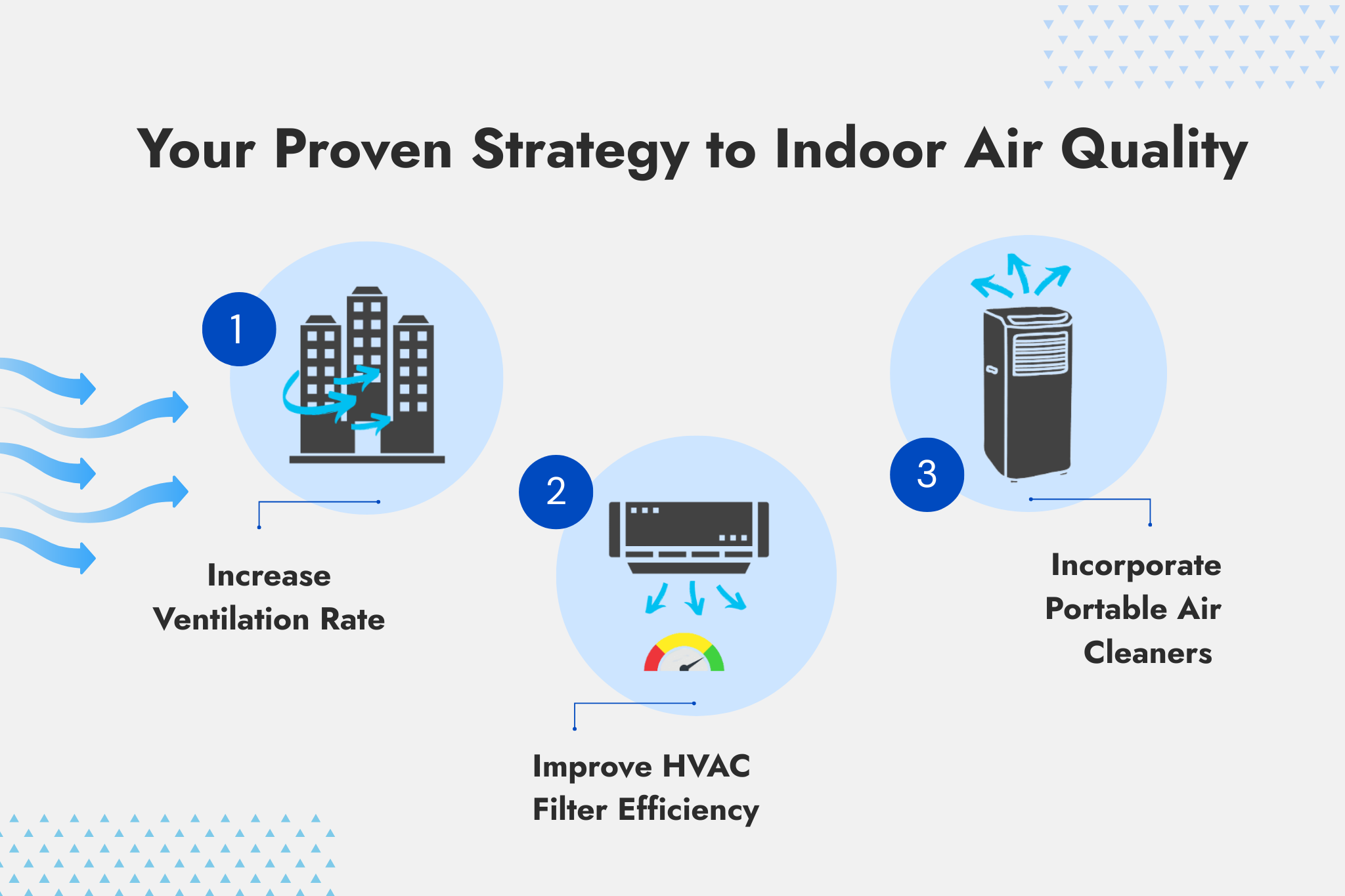
Through this proactive approach, we successfully minimised odour impact and maintained a healthy environment, allowing construction activities to continue without disrupting the surrounding premises.
3. Calibrating the HVAC System
An IAQ-ready building needs an adaptive mechanical system. Engineers fine-tune air balancing, humidity control, and temperature zoning to ensure consistent comfort. When combined with smart sensors, these systems respond dynamically — increasing airflow in busy areas or reducing cooling when spaces are unoccupied.
4. Transparent Handover Documentation
IAQ test reports and calibration records maybe included (upon request) in the final handover package, giving clients assurance that the environment is not only functional but healthy. We also brief facilities teams on ongoing maintenance schedules, such as filter replacements and seasonal recalibration.
Smart Monitoring for Ongoing Assurance
The evolution of IAQ sensors and adaptive HVAC systems now makes it possible to maintain healthy air long after handover. Small, discreet sensors continuously measure temperature, humidity, CO₂, and VOCs, sending data to a central dashboard. If air quality dips below thresholds, the system automatically increases ventilation or triggers alerts.
This real-time transparency aligns with corporate sustainability and ESG goals, allowing companies to report environmental performance with confidence. It’s not just about compliance – it’s about creating workplaces where people truly thrive.
Designing for the Air We Don’t See
The best workplaces don’t just look good – they breathe well.
A comfortable environment is invisible yet tangible: fresh air that supports focus, balanced humidity that protects materials, and temperatures that adapt effortlessly to how people work.
At DB&B, we believe good design is holistic. From material selection and IAQ testing to adaptive HVAC calibration and post-handover monitoring, every step contributes to a workspace that supports human well-being from the moment the doors open.
Because the real measure of success isn’t just how a space looks on day one – it’s how it feels to the people who call it their workplace.
